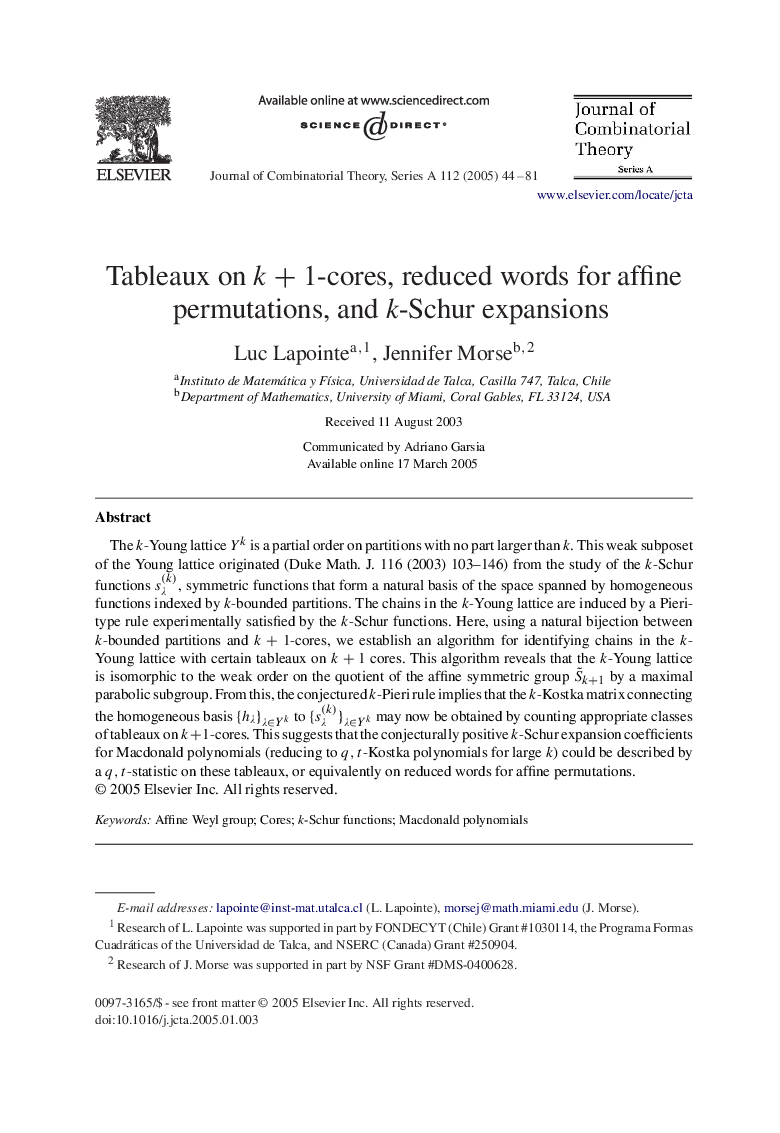| Article ID | Journal | Published Year | Pages | File Type |
|---|---|---|---|---|
| 9515421 | Journal of Combinatorial Theory, Series A | 2005 | 38 Pages |
Abstract
The k-Young lattice Yk is a partial order on partitions with no part larger than k. This weak subposet of the Young lattice originated (Duke Math. J. 116 (2003) 103-146) from the study of the k-Schur functions sλ(k), symmetric functions that form a natural basis of the space spanned by homogeneous functions indexed by k-bounded partitions. The chains in the k-Young lattice are induced by a Pieri-type rule experimentally satisfied by the k-Schur functions. Here, using a natural bijection between k-bounded partitions and k+1-cores, we establish an algorithm for identifying chains in the k-Young lattice with certain tableaux on k+1 cores. This algorithm reveals that the k-Young lattice is isomorphic to the weak order on the quotient of the affine symmetric group SËk+1 by a maximal parabolic subgroup. From this, the conjectured k-Pieri rule implies that the k-Kostka matrix connecting the homogeneous basis {hλ}λâYk to {sλ(k)}λâYk may now be obtained by counting appropriate classes of tableaux on k+1-cores. This suggests that the conjecturally positive k-Schur expansion coefficients for Macdonald polynomials (reducing to q,t-Kostka polynomials for large k) could be described by a q,t-statistic on these tableaux, or equivalently on reduced words for affine permutations.
Related Topics
Physical Sciences and Engineering
Mathematics
Discrete Mathematics and Combinatorics
Authors
Luc Lapointe, Jennifer Morse,
